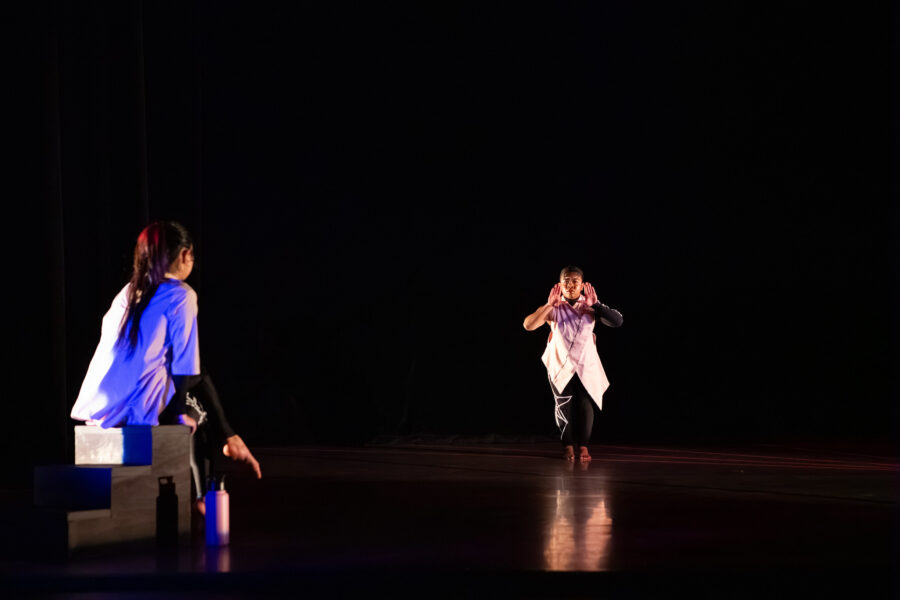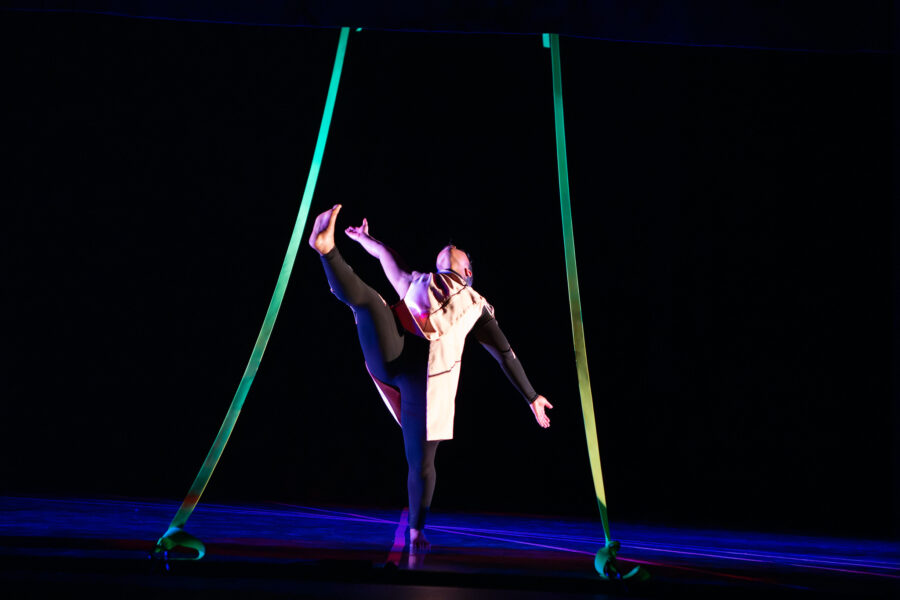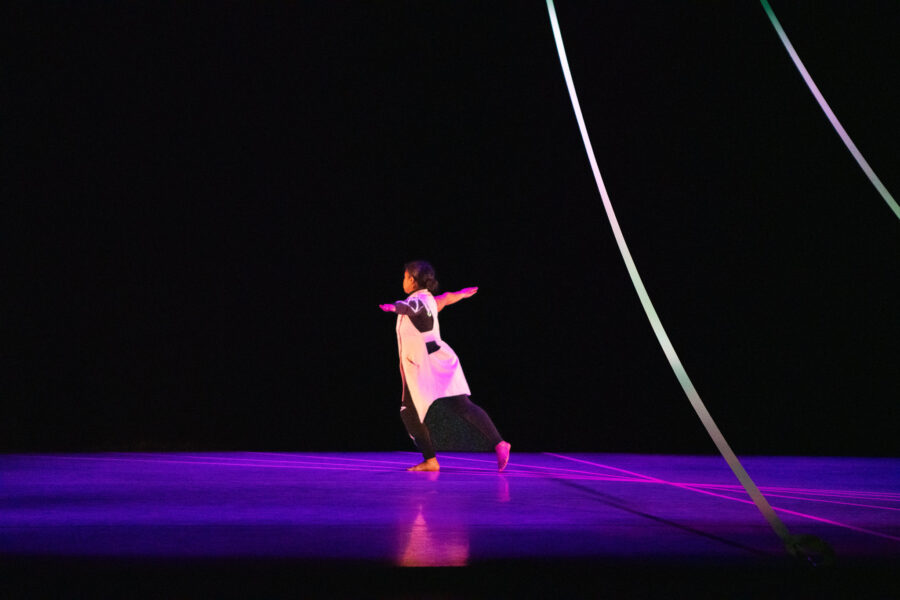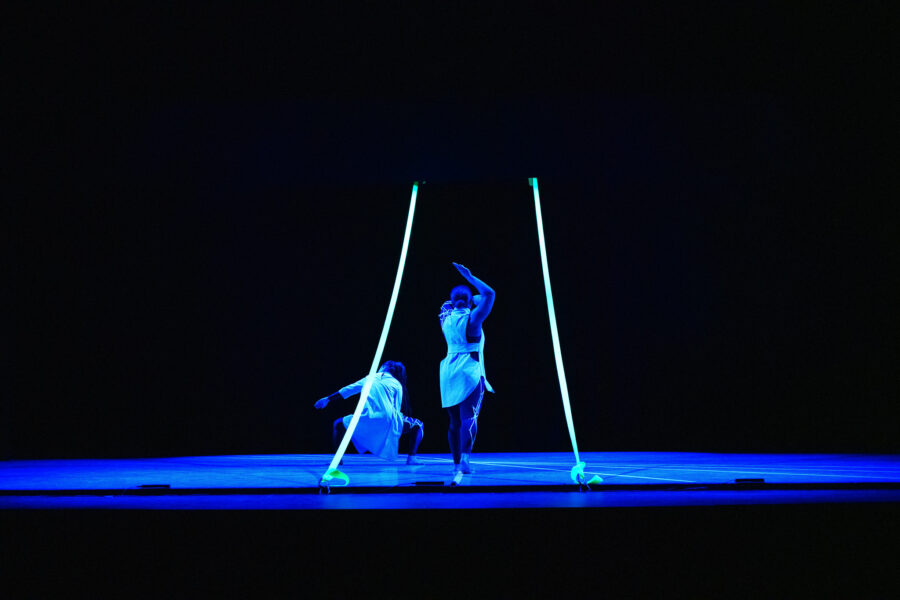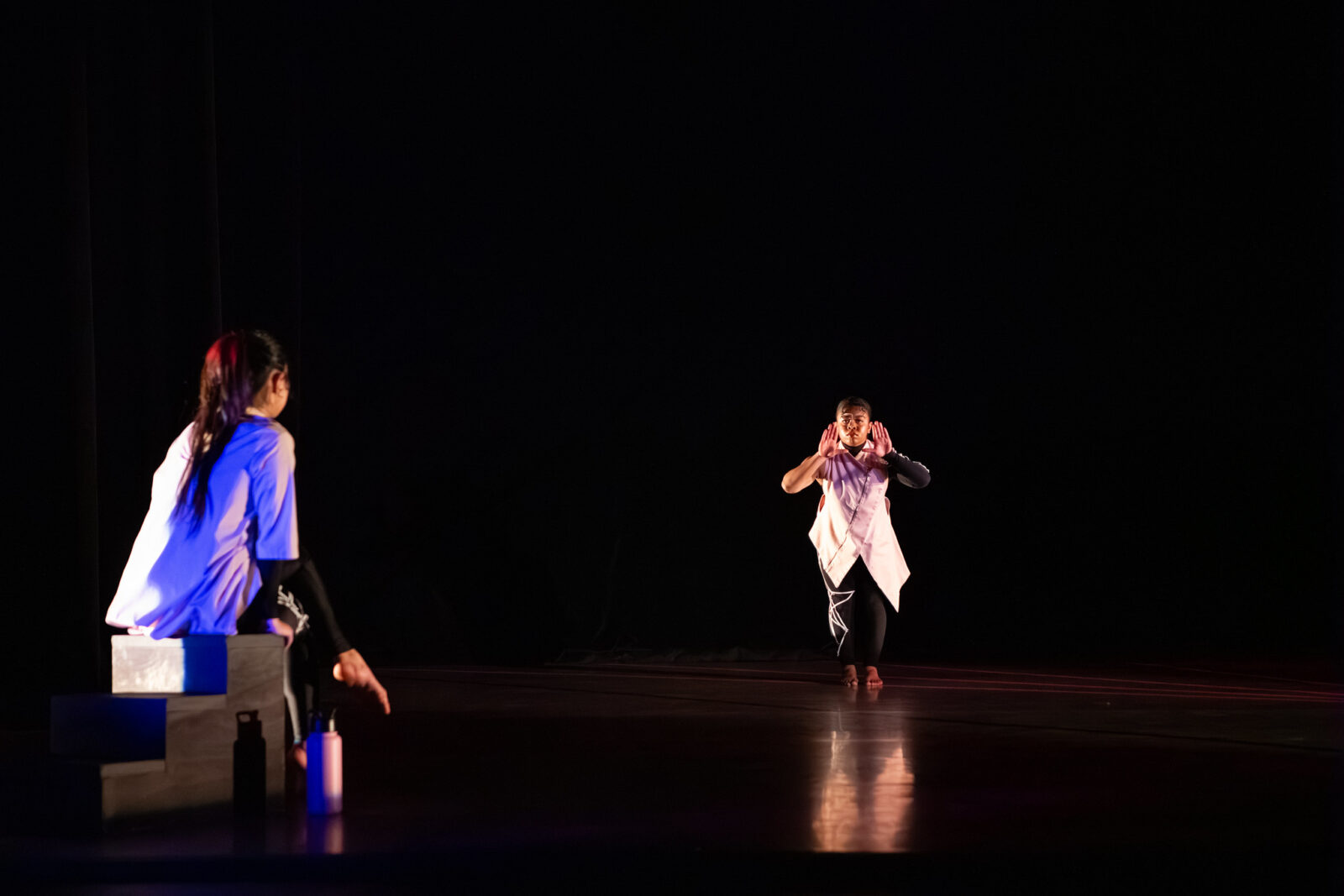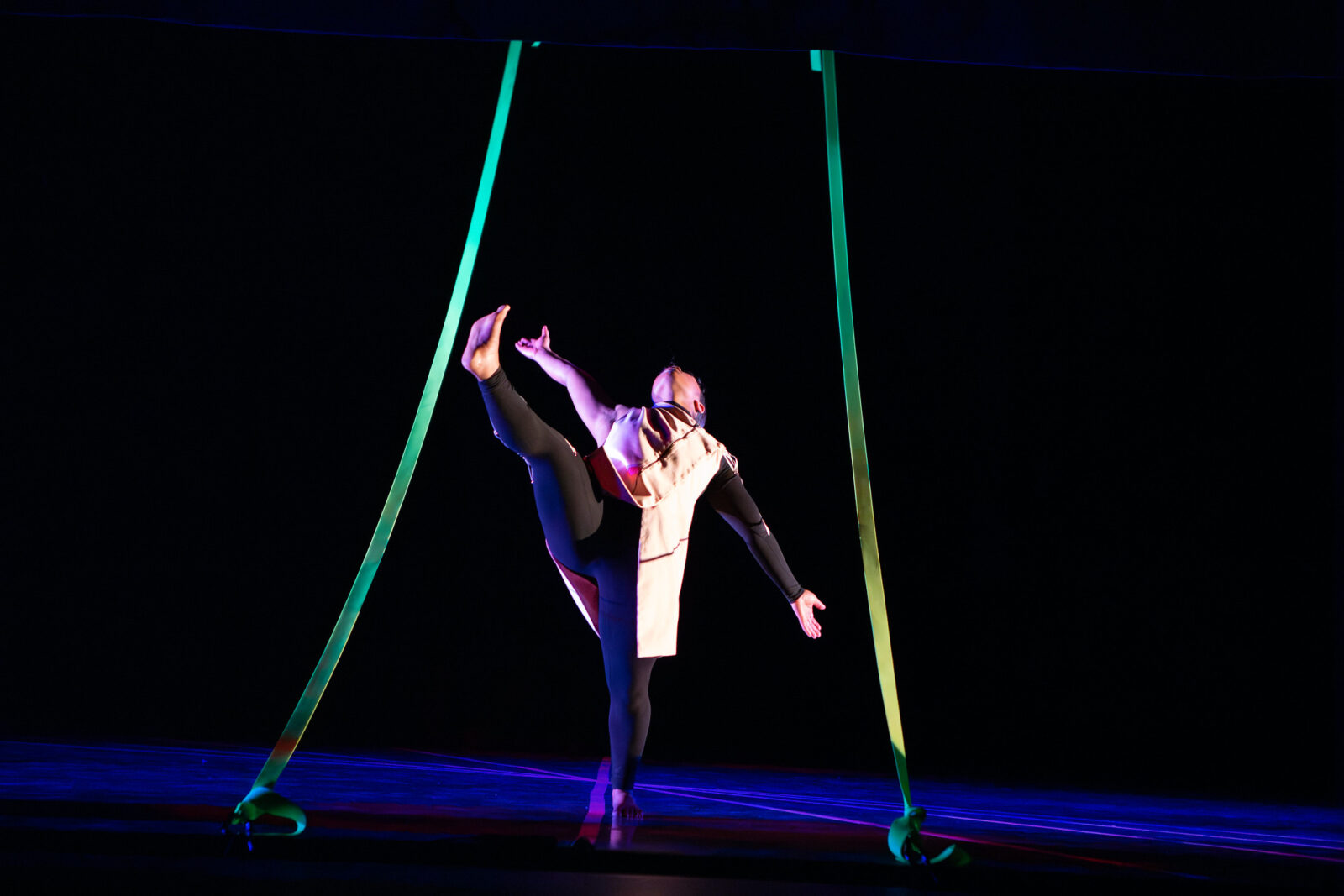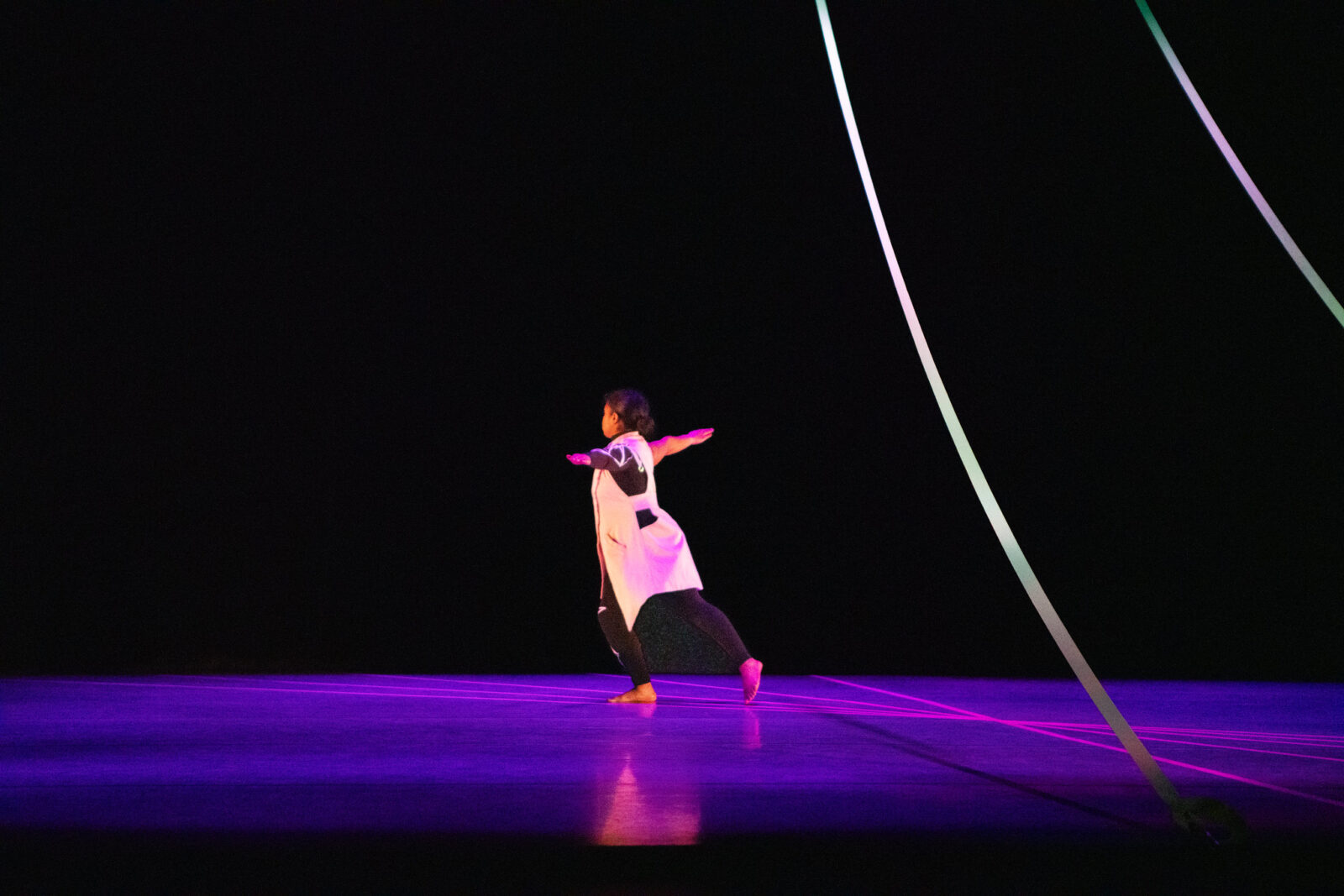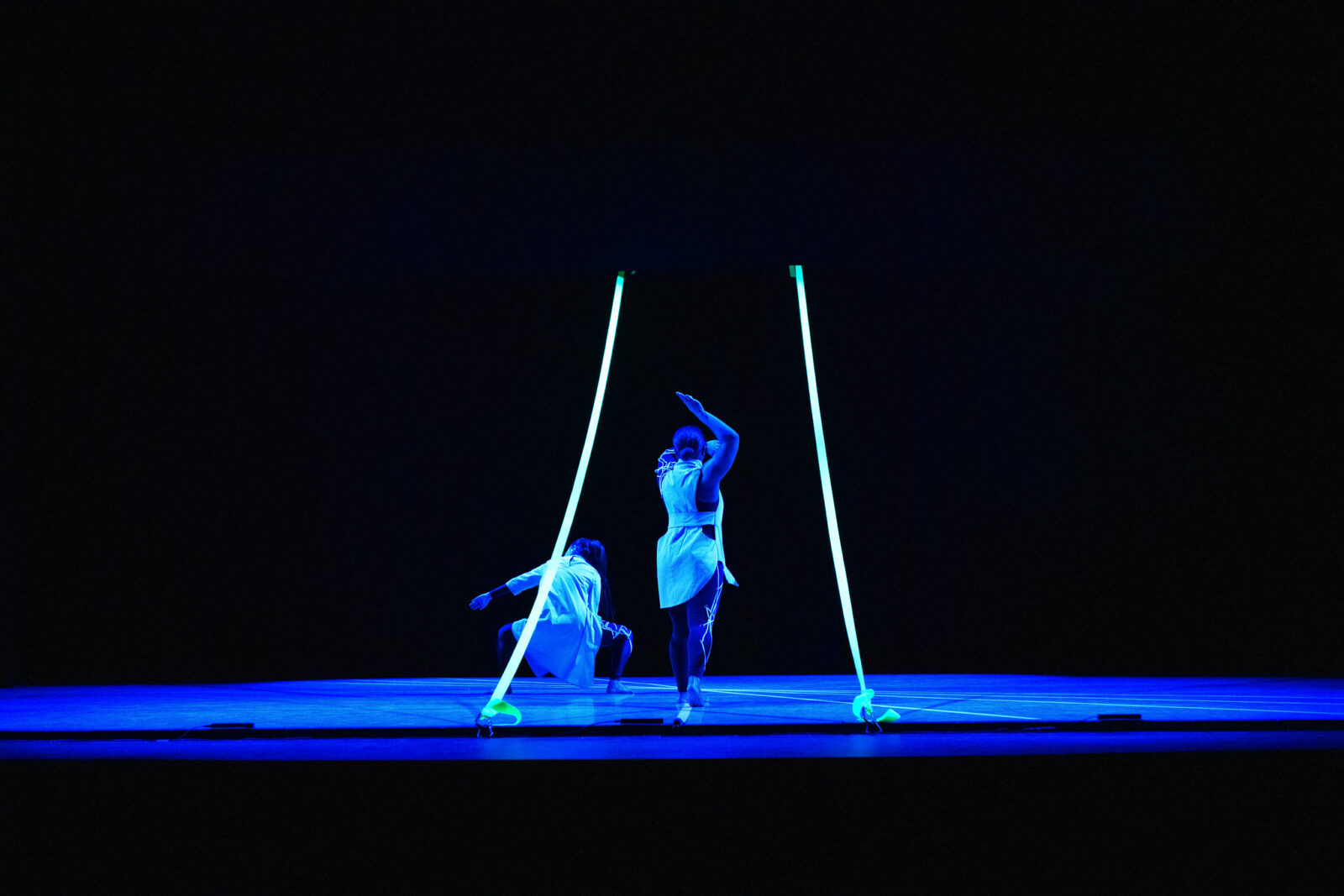intro text
By Mariana Seda and Betsy Brandt
Those of us who enjoy dance performance know: we don’t need someone to tell us why a moment delights or saddens, gives us hope, or brings us to tears. But oftentimes the urge to understand a choreographer’s intention and whether we “got it” leads us to scour the program, re-reading titles and notes, looking deeper into the music to find justification for our interpretations. Thankfully, the work of a dramaturg can often help guide not only the audience towards understanding and appreciation, but also the creation of a piece from the very beginning. We asked dance professor and dramaturg Betsy Brandt for more insight into the question:
“What does a dance dramaturg do?”
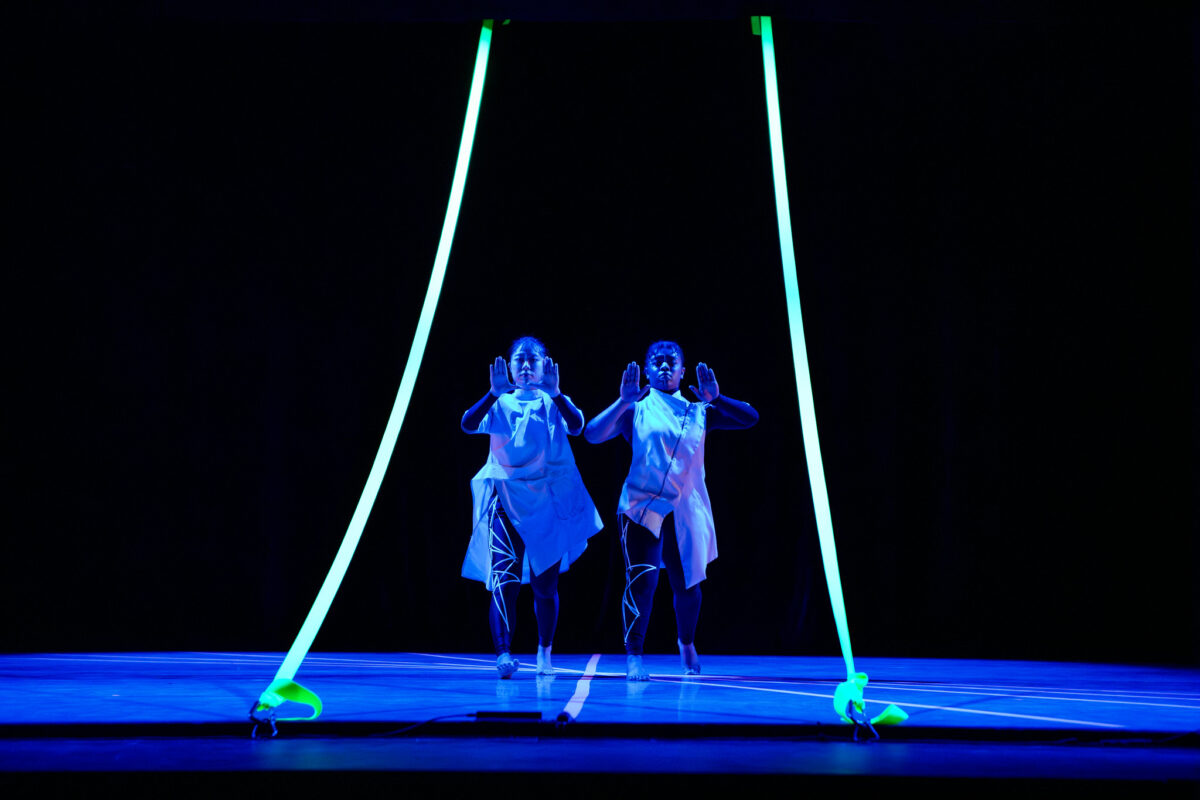
Yuno Kimura and Jaden Monroe performing in “Frame of Reference” choreographed by Elliot Reza Emadian.
main text
BETSY BRANDT: “I get this question all the time, and there is no simple answer. I help choreographers create new dances. Sometimes, I research a topic related to a specific project. Often, I do some writing, perhaps a grant application or a program note that contextualizes the dance for the audience. I might offer suggestions or ask questions during rehearsals, or I might just be a “friend” of the process, someone to talk to and help work through ideas. Elliot Reza Emadian, choreographer of Frame of Reference (2024), put it this way, “Betsy, thank you for the many hats you don and doff with aplomb.” I’m not sure about the aplomb, but the job indeed requires a lot of hats, and it takes a lot of active listening to figure out when to wear each one.
After a decade of working as a dramaturg (including collaborating with some of the amazing choreographers on the dance faculty at U of I before I joined them in 2022), I also think that there is something deeper going on. It’s about allyship, about using my time and labor to platform someone else’s voice without (hopefully) inserting too much of my own. At the end of the day, this is their dance, not mine. As an educator, I see strong parallels between this dramaturgical approach and broader conversations around student-led learning. What does dramaturgical teaching look like? It means starting from the students’ interests and centering conversations around their experiences. It means talking to them eagerly and often about their emergent artistic voice – in the spirit of allyship not critique. It means fostering the trust needed to take risks, because students know we’re in their corner. It means being interested and staying interested, because that’s the gig.”
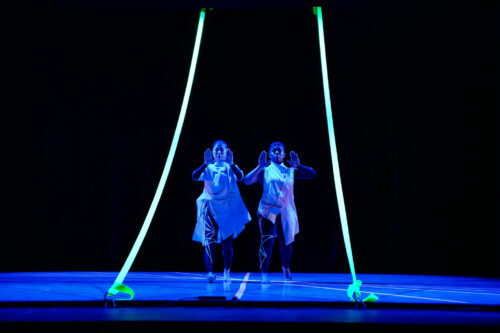
Yuno Kimura and Jaden Monroe performing in “Frame of Reference” choreographed by Elliot Reza Emadian.
"Frame of Reference" choreographed by Elliot Reza Emadian
"Frame of Reference" choreographed by Elliot Reza Emadian
